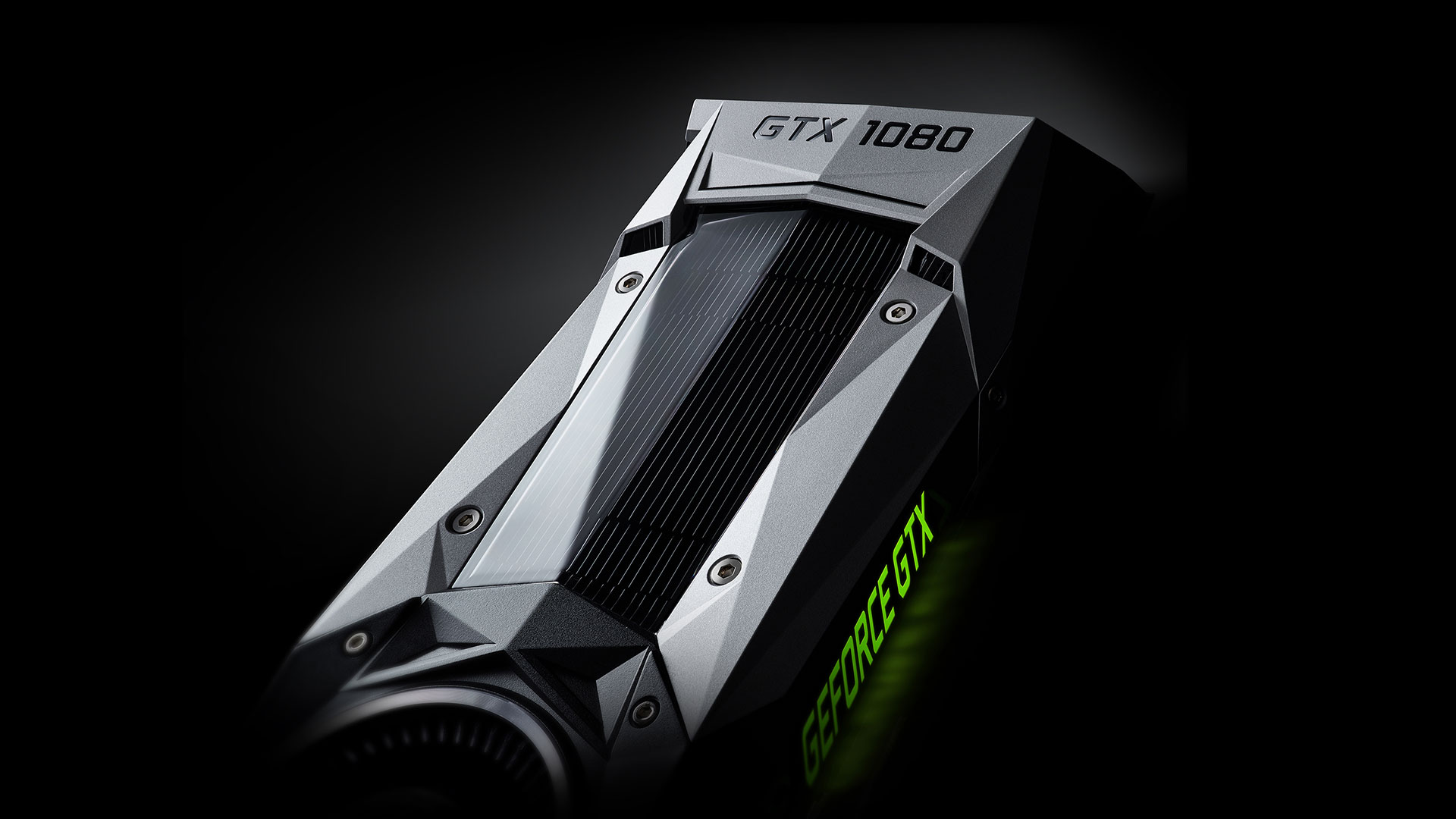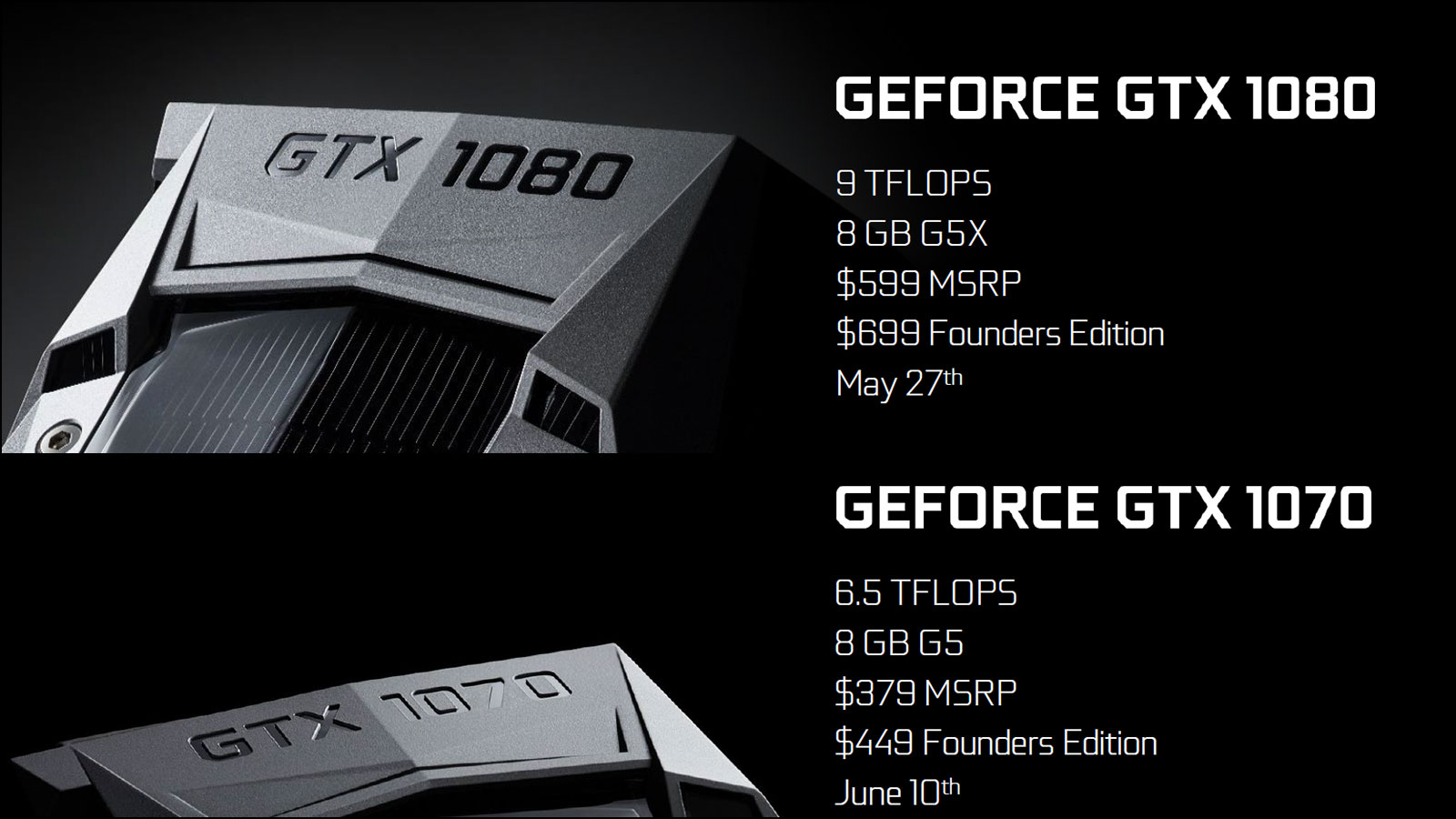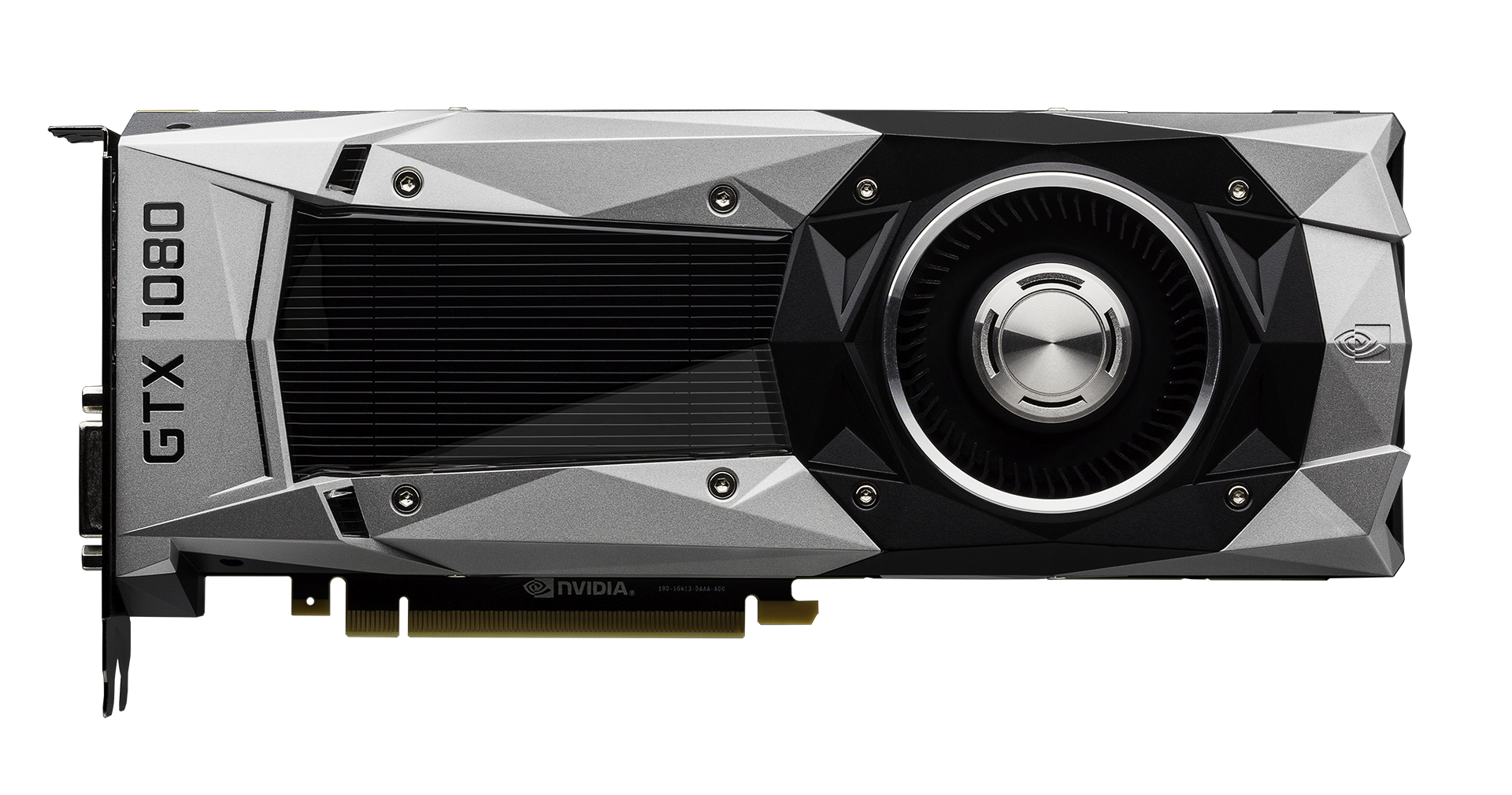What exactly is Nvidia’s GTX 1080 Founders Edition?
A rose by any other name…

Last week, Nvidia unveiled their upcoming GTX 1080 and GTX 1070 cards, giving a few pieces of information while withholding other details. We've seen the GTX 1080 cards, we know Nvidia says it will be faster than a Titan X as well as GTX 980 SLI, and we know there will be some new software and features. We also know the target pricing and retail launch dates:

And there's the rub: what the heck is this so-called "Founders Edition?" There's a standard GTX 1080 that will have an MSRP of $599, which sounds pretty great considering the expected performance increase over both the GTX 980 Ti and the Titan X, but what do you get if you spend $100 more for the Founders Edition (or $70 more for the Founders Edition on the 1070)? Speculation has run rampant, from better binned chips to overclocked cards to limited time special editions. All of those guesses are incorrect.
The Founders Edition for the 1080 and 1070 are in fact nothing more than a renaming of the "reference" cards that Nvidia normally releases with the launch of a new GPU. They are built and designed by Nvidia, they will run the official stock clocks, the chips are not specifically binned to be better than others, and there are no extras of any sort. So why would you want one?
Here's where things get a bit more complex, and we won't actually have a final answer until the GPUs start shipping, but there are some things to consider.

First, the Founders Edition [Ed—hey, where's my apostrophe?] cards are apparently built to exceed the minimum quality needed. The vapor chamber cooling, high quality power components, and other elements cost money, and they may not even be necessary. It's not too hard to guess that the reference cooler—including the large metal backplate—is more expensive than an open air cooler that doesn't have a vapor chamber and uses two fans to move more air. How much more expensive? Almost certainly not $70 or $100.
Second, the Founders Edition cards will be available at launch. Other versions from Nvidia's partners… we don't know when exactly they will show up. The cynics will say that this is a way for Nvidia to jack up the pricing on the new Pascal cards by $70-$100, but that only works if MSRP cards aren't available until later. In fact, Nvidia explained that, as usual, we can expect to see factory overclocked cards and other variations that cost more than the Founders Edition, along with other cards that will cost less, and presumably at least some of these will be around at launch. Are those cards better, worse, or the same as the Founders Edition? The answer: yes.

But realistically, look at the prices—$100 extra for the 1080 FE, and $70 extra for the 1070 FE. We checked 980 and 970 pricing, and at present, the highest priced 970 costs about $60 more than the lowest priced model, and the same goes for the 980 cards. Only the hybrid cooling cards tend to fall outside that range, so the Founders Edition will effectively set the maximum price we're likely to see—except at launch, depending on supply, as we could see even higher price premiums in the short term. Oh, and it's probably not too much of a shock to see the GTX 980 and 970 prices in freefall, what with 1080/1070 now announced; the 980 can be picked up for as little as $410 (after mail-in rebate), while the 970 is going for as little as $260 (again, after MIR). Don't be surprised to see prices fall even further in the coming month.
The biggest gaming news, reviews and hardware deals
Keep up to date with the most important stories and the best deals, as picked by the PC Gamer team.
Finally, and this is perhaps the most important point, the Founders Edition cards will not be a limited quantity offer; they will be available at launch and throughout the lifespan of the new Pascal cards. Nvidia also plans to sell the cards directly via its website. So despite the name sounding like something you'd only get if you joined a Kickstarter early on, these will actually be long-term commitments. And that changes the playing field quite a bit. It also explains the higher than MSRP pricing.
Nvidia has quite a few add-in board (AIB) partners, who determine the pricing and features of the cards they sell. Imagine what would happen if Nvidia were to sell their reference designs at MSRP—they'd be competing directly with their partners! That's not a great way to win friends and influence people, so by setting the prices significantly higher, Nvidia leaves plenty of flexibility for their partners. The same goes for the clock speeds; the Founders Edition cooling may be better than what some of the partners offer, and the cards appear ready for some serious overclocking, but you won't get a factory overclock.

There's more to this than just making an alternative card, however. Nvidia has other partners, system vendors, who use their GPUs. Many of these will qualify specific hardware to work in their systems, and some of these vendors really like the old reference cards. They use blowers in place of open air coolers, which means they often work better in SLI configurations or small chassis—Falcon Northwest for example told me they won't put a non-blower GPU in their compact Tiki, due to heat concerns. If the reference design is only available for a short time before transitioning all graphics card production to the AIB partners, it can make things more difficult for system integrators. Now they can qualify the Founders Edition and rest easy knowing the cards will be available for purchase for a year or more.
And that's basically the whole story: the Founders Edition will be an Nvidia manufactured card, just like the old "reference" models, only it will continue to be manufactured and sold throughout the life of the GTX 1080/1070 cards. It will carry a price premium, but that appears to be mostly a case of avoiding too much direct competition with their AIB partners. If you want a card at launch, supply might be limited to Founders Edition models, but long-term we'll see cards at and likely even below MSRP.
Jarred's love of computers dates back to the dark ages when his dad brought home a DOS 2.3 PC and he left his C-64 behind. He eventually built his first custom PC in 1990 with a 286 12MHz, only to discover it was already woefully outdated when Wing Commander was released a few months later. He holds a BS in Computer Science from Brigham Young University and has been working as a tech journalist since 2004, writing for AnandTech, Maximum PC, and PC Gamer. From the first S3 Virge '3D decelerators' to today's GPUs, Jarred keeps up with all the latest graphics trends and is the one to ask about game performance.


